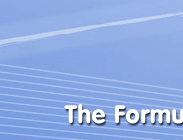      |
|
Contact us at: sooddram@gmail.com |
The Relevance of Human Rights – A Lankan
Perspective
(Prof.
Rajan Hoole)
One
important indicator of Human Rights protection in modern society is successful
enforcement of the rule of law. Human Rights activism in Lanka came about as a
response to special challenges arising from progressive deterioration of the
rule of law. The law is technical in its workings. Good laws and good law
enforcement advance human rights, and their opposites lead to conflict and
crisis. The strengthening of institutional aspects of human rights, the
promotion of a human rights culture and the ambient political mores in which
these operate, interact with and influence one another. Deterioration of one
will undermine the others.
Sinhala Only was bad in law and was a reflection of the changing
political culture. It resulted in communal violence in 1956 and 1958. Law
enforcement did not go so far as to punish the offenders, because the political
class at that time forbad it. How the sympathies of many powerful MPs were with
the attacks on Tamils is documented in Tarzie Vittachi’s Emergency ’58. The book is an example of the
kind of activism that has since been missing. The country had not reached a
point where Vittachi feared politically connected
assassins at the gate. Despite his vacillations, no one accused Prime Minister
Bandaranaike of a direct hand in the riots (That changed with Prime Minister
Jayewardene in 1977).
Consequently
ethnicity dominated the political landscape to a point where it began to
over-determine all other contradictions. Instead of strengthening and deepening
the democratic culture, the evolving politics undermined institutions of law
enforcement and transformed the state into one that was patrician not only in
class terms but also with regard to ethnicity and religion.
What began
with 1958 was a major blow to the rule of law in Ceylon. Once that element of
cynicism creeps into the system that the powerful are above the law, it opens
the flood gates for the weaker to advocate extra-legal measures and even
rebellion. The powerful who use violence against
Tamils even for purely ideological reasons, would no sooner resort to violence
against Sinhalese for power and loot. Was it not the deep set corruption within
Ceylonese society that triggered the 1971 JVP-led Sinhalese youth uprising?
The examples
above give some idea of what human rights activism has meant in Lanka, even
when it was not called by that name. It must address reform or repeal of bad
laws, press for new laws and measures to address protection against injustices,
expose failures in law enforcement and seek remedies, campaign for new
sensitivities on the part of law enforcement authorities to make marginalised sections feel that the law protects them and
perhaps most importantly in this country, usher in new sensitivities and
constitutional reform not just to contain conflict between classes and ethnic
groups, but also to make them feel equal partners in this country. It is
activism that singly or in partnership straddles several areas and levels.
The first
time many of us became familiar with the term human rights was after the Civil
Rights Movement (CRM) which was founded in the wake of the 1971 JVP insurgency,
became active in several of the spheres mentioned above including the
North-East conflict. Experience teaches us that to be effective, such a movement
must command a virtual political base of sympathisers
who would in a crisis stand by it. The CRM in its early years was aided by two
commanding figures, Bishop Lakshman Wickremasinghe and Somasundaram Nadesan, who could stand up to anyone in the country.
Bishop Lakshman was also well grounded in workers
concerns and the Trade Union Movement.
Another
important initiative was the Citizens’ Commission headed by Justice O.L. de Kretzer with Justice V. Manickavasagar
and Bishop S. Kulandran that looked into the police
charge resulting in nine deaths by electrocution at the International
Association for Tamil Research conference in Jaffna held in January 1974. The
Commission’s conclusion was that the ‘tactful’ course for the Police was quieta non movere
(leave well alone) rather than to have acted precipitately in trying to arrest
a Tamil Nadu Politician who had already got off the stage at the request of the
organisers. Mrs. Bandaranaike’s government could
easily have faced the truth rather than allow the TULF to carry out vicious
propaganda blaming Mayor Alfred Duraiappah for the
deaths. No one then called Justice de Kretzer a
traitor.
Another late
instance is the Kenneth de Lanerolle Committee report
on the attack on Tamil students at Peradeniya
University by a mob of students connected to the UNP in May 1983. The author
exposed the violence as planned and instigated without provocation, and was
uncompromisingly clear that justice should be done.
These
examples show that there were men and women from all communities that wanted
the truth be told and justice done. They saw this as indispensable to peace and
communal harmony.
Thus human
rights activism is well grounded in local traditions and local initiatives.
Against this background it is rather strange that some of the most powerful in
the land today should excoriate human rights activism and attempts to report
the truth as the work of Western agents and traitors..
Are we so barbarous as to believe that strictures against torture and murder
are eccentricities of an alien culture?
Where things went wrong
Ethno-centric
ideologies advancing grandiose claims to hegemony, founded on shadowy legends
that oversimplify or mythologise, are merely a hair’s
breadth away from crimes against humanity. This was the background to the 1958
violence. August 1977 was far worse in that strong circumstantial evidence
points to its planning and execution at the highest level. The core of the
evidence before the Justice Sansoni Commission of
Inquiry was the viciously mischievous radio message sent from Jaffna Police
Station on 17th August 1977 that mobs are burning buses, were
attacking the Jaffna Buddhist vihare and had
assembled at the Jaffna Railway Station to attack passengers, meaning
Sinhalese, and the situation was serious.
The message
was dictated by HQI Godfrey Gunasekera to PC Kumarasamy in the presence of Inspector Gurusamy
and sent on his order to Police HQ as coming from A.S. Seneviratne,
SP Jaffna. DIG North, Ana Seneviratne and SP Jaffna
were then at their stations. Although the recipient at Police HQ asked for a
clarification, Inspector Gurusamy without saying the
message was a lie, cancelled the first message and asked HQ to await a further
message. However police messages, such as the one by IGP Stanley Senanayake calling for protection of Buddhist sites in
Jaffna, with no subsequent clarification, were calculated to add fuel to the
fire. The Police’s intention is further exemplified by Superintendent of Police
Liyanage, who was in Jaffna till 17th
August afternoon and in the evening was in Anuradhapura spreading spiced up
versions of the false radio message and instigating violence.
There can be
little doubt in the mind of a lay observer that this was newly elected Prime
Minister Jayewardene’s way of teaching the Tamils a lesson, which we saw again
in 1983. Justice Sansoni in his report avoided the
implications of the testimony before him and simply dismissed any suggestion of
high level involvement. He tended to blame the violence on the political demand
for Eelam. Today even the key evidence that
transpired under cross examination by Attorney Leslie Bartlett is hard to find.
The evidence
before the Commission made a good story for investigative journalism anywhere.
But the Press shunned it as bringing shame on the Sinhalese. This absence of
publicity helped Jayewardene to apply pressure on Sansoni,
who protected the Government from blame. Our judges too are products of our
society.
Few leaders
of society have seen the propensity for the country to go on without any account
for the communal violence of 1958, 1977 and 1983, as courting utter ignominy.
Many of them were socially comfortable with the rulers. Meeting them personally
and getting some verbal assurances and then lapsing into complacency became an
agreeable form of activism. Confrontation was anathema. The country carried on
regardless, until a new outburst of barbarity came with the second JVP
insurgency in 1987, which flowed directly out of July 1983.
Once the
Jayewardene government began to act in total disregard for the law many persons
who had been active in challenging the Government became thoroughly perplexed.
The 1982 referendum was followed by the July 1983 violence and then by grand
schemes for defeating terrorism by driving out Tamils through brute force and
planting Sinhalese settlements in the North-East. Weli
Oya was the prime example. It introduced a new
menacing level of violence from both sides.
Avenues for
challenging the Government legally were then limited. The CRM continued to work
in this area. It was party to the Paul Nallanyagam
case that marked a notable victory. Nallanayagam, a
local activist from Kalmunai exposed a massacre by
the STF and was detained under the PTA. Compensation claims of Welikade Massacre victims provided a legal window resulting
in CRM Secretary Suriya Wickremasinghe’s
long and painstaking analytical study of the crime. Going beyond this required
a political base, which was almost non-existent after the Traditional Left
committed hara-kiri by joining the Sinhala Only bandwagon in the 1960s.
The 1971 JVP insurgency was an early manifestation of this suicide. The vacuum
is keenly felt to this day. In the 1970s several new Left movements responded
to this vacuum by taking up the struggle for social justice from outside the mainstream
parliamentary democracy. They too were pushed into human rights activism in a
manner they had not anticipated.
Social Justice and Human Rights
From the
earliest days of Left activism in Lanka, there was also a deep consciousness of
the class nature of the ‘rule of law’. We could easily lose sight of the fact
that a vast number of people from the poorer strata of this country never had
access to justice. Consequently most Left critiques, especially from those who
aimed at total social transformation, ignored the importance of the human
rights struggle. This changed when J.R. Jayewardene’s regime from 1977 moved to
suppress the workers’ struggles in a ruthlessness manner. In facing up to
Jayewardene’s increasingly authoritarian rule and the suppression of trade
unions, many Left activists advanced democratic and human rights as an
important aspect of their struggle for social emancipation. A number of
movements were formed. Among them were the Movement for the Defence
of Democratic Rights (MDDR) and the Movement for Inter-Racial Justice and
Equality (MIRJE). Among their activities were campaigns for the release of
political prisoners, which meant close engagement with the law. Jayewardene’s
suppression of workers and Tamils and his cynical dalliance with the JVP,
finally making them scapegoats for the 1983 communal violence rendered the
existing vacuum explosive. The JVP used the oppression and even ethnically
charged rhetoric, to muster rural youths for its “revolution”. The result was
massive bloodletting and unprecedented human rights abuses from 1987 to 1990,
once more raising new challenges for human rights communities the world over on
dealing with non state forces.
This was an
experience that showed how over-determination of ethnicity in political life
enthroned a state of permanent impunity to the detriment of social justice and
ethnic equality.
Tamils and Human Rights
What
happened in Tamil society, in response to this attitude of the South, was a
similar frivolous approach of debasing the law and playing with fire. Its
campaign against Alfred Duraiyappah as a traitor, for
the small prize of capturing the Jaffna parliamentary seat, provided the cue
for the rise of the LTTE which began with his assassination. Murdering
‘traitors’ became a means to cheap popularity for the incipient militant
groups. Inspector Gurusamy, who admitted
before the Sansoni Commission that he was forced to
be party to the radio message that ignited the 1977 riots, was shot dead by
militants the following year. He had merely done the work of a servant and was
an important witness. Killing him was meaningless and irresponsible.
Thus on the
one hand the Government arrogantly made a virtue of acting outside the law. On
the other, Tamil nationalists supporting the separatist project insisted that
there was no prospect of justice from the Sinhalese state and either supported
or turned a blind eye to the killing of police officers. They ridiculed
attempts to challenge the State through appeals to the law. Parallel trends in
the North and South reinforced one another.
When
Jayewardene criticised the TULF’s silence on the
killing of policemen, the TULF was cornered. They were being overtaken by the
monster they had spawned. In early 1982 the next step in degeneration came when
the LTTE killed Sundaram, a key figure in its rival
the PLOTE. A few months later the PLOTE murdered two LTTE sympathisers.
Not quite knowing this, I called at the house of my friend, the TULF MP for
Jaffna, at dusk. He came to the gate a long while later, apologised,
spoke of his own fear and said, “The fellows have gone mad.” Seven years
later he was killed by the LTTE. The rest is history.
Human Rights acquires an ambivalent reputation
Our
induction into human rights activism came with different individuals, among whom was Dr. Rajani Thiranagama who had been active in diverse ways, coming
together at the end of 1986. Having failed in efforts to mitigate the effects
of the LTTE’s refusal to respond to the December 19th 1986
(Chidambaram) proposals and continue the war at enormous cost, it became our
lot to experience relief at the coming of the Indian Peace Keeping Force
(IPKF), and then despair and destruction when the LTTE began an insensate war
with the IPKF. We believed that the only course open to us was to tell the
whole truth and face the consequences. We authored the Broken Palmyra,
frequently by candle light, after regular interviews with victims.
Our common
position born of experience was that it was meaningless to criticise
the governments of Sri Lanka or India, without questioning what happened among
us and what we did as a people. When in the middle of 1988, there was a call by
a section of academics in the South to form the University Teachers for Human
Rights (UTHR), in response to the effects of the JVP insurgency; we found that
we had been moving in the same direction. Several of the academics in the South
too felt that they must challenge both the Government and the JVP. We began
issuing our reports under the name UTHR (Jaffna).
The national
UTHR became paralysed after some months when one
section tried to push it in a pro-JVP, anti-IPKF direction. Prof. H. Sriyananda who was co-chairman of the UTHR was of a very
clear mind that the UTHR should be meticulously impartial in its reporting and
continued to be a good friend of ours. Thanks to the political base we had
because of the wider involvements of Rajani and some
others, we were able to withstand pressures from the combatant parties to
manipulate us. Our fundamental standpoint was the people’s interest. From this
standpoint we took a strong stand against the politics and methods of the other
actors on the scene. Even in exile we remained part of a wider, virtual
political community of like minded people on issues, new friends, old friends
and those with whom we had earlier differed.
There were
other developments which gave human rights an ambivalent reputation. The SLFP
in 1988 tried to ride to power on the back of JVP terror..
The JVP, after leading it up the garden path, dropped the SLFP rudely and then
targeted its members. JVP terror forced all political parties to rely on state
protection and many cooperated with state terror. When some SLFP politicians
took up human rights, mainly targeting the UNP government, it degenerated into
a game of running with the hare and hunting with the hounds..
That too was a logical consequence of Sinhalese chauvinism.
The human
rights slogan became a weapon against the UNP and aided Chandrika
Kumaratunge’s election as president. Not surprisingly
her Commissions of Inquiry into violence during the JVP era were seen as a
dishonest and partisan endeavour and evoked
widespread cynicism about human rights itself. The guilt was all over. The
result did much harm in making peace without human rights seem acceptable, even
if illusory.
In this
context, while the West-initiated, Norway-facilitated peace process had many
flaws from the start, there was reluctance on the part of civil society
activists to criticise it. Since the process would
temporarily stop the war; they hoped the LTTE might in the meantime be tamed
through pure appeasement. This meant turning a blind eye to political killings
by the LTTE and enhanced conscription of children, using the access provided by
the peace process, without any real checks. Neither had they, after many years
of encounters with the LTTE, done their home work.
Those who
knew the LTTE better were clear that the peace process was doomed and would
give discredited Sinhalese chauvinist politics a new lease of life. This is
where we are today. Ironically, it is the chums of one time human rights
champion Mahinda Rajapakse,
who in his time lobbied all the well known human rights organisations
in the West, who should take up cudgels against local human rights advocates as
agents of the West. These advocates, though threatened regularly by the
President’s cronies, have spoken out boldly, but without going for where it
really hurts. There has been a spate of human rights violations since the public
execution of the five students in Trincomalee on 2nd
January 2006. There were the horrendous killings in Vankalai
and Allaipiddy. But local groups made almost no
impact. Little is on record about the host of terrible violations by the
Government and the LTTE during the recent war.
Challenges Ahead
We presently
have two contestants for the presidential election. Both have appalling records
and hold out no hope of improving the state of human rights or taking
meaningful action against past violations. Going by the past record, the
tendency in civil society would be to throw principles to the wind and opt for
patently ill-fated pragmatism, where they would have no influence over what
follows.
The end of
the war provides an opportunity for removing ethnic over-determination from our
political life and to redirect our energies towards the imperative of reforming
the state and revamping its institutions, providing appropriate political and
constitutional arrangements to remove conflicts that have dogged us. It however
looks as if this opportunity will be missed, leading to manifold challenges
before the human rights community. In the South, human rights activism is
failing to build broader movements and is hoping for a change of the government
in power as a lever to promote human rights. This course has repeatedly failed.
The Tamil community has been through
a very destructive phase lasting the best part of three decades and is in a
state of paralysis. When the politics of the South shows no prospect of
changing course, the Tamils as a people need to do a serious reappraisal. They
cannot go on blaming Sinhalese politics, because the community’s future is at
stake. It is imperative for the community to regenerate itself economically and
socially and to identify short term and long term strategies towards achieving
dignity. This must go hand in hand with convincing the Sinhalese masses that
their well being is intertwined with respecting the rights of minorities and
the inviolability of their political and cultural space.
உனக்கு
நாடு இல்லை என்றவனைவிட
நமக்கு நாடே இல்லை
என்றவனால்தான்
நான் எனது நாட்டை
விட்டு விரட்டப்பட்டேன்.......

ராஜினி
திரணகம
MBBS(Srilanka)
Phd(Liverpool,
UK)
'அதிர்ச்சி
ஏற்படுத்தும்
சாமர்த்தியம்
விடுதலைப்புலிகளின்
வலிமை மிகுந்த
ஆயுதமாகும்.’ விடுதலைப்புலிகளுடன்
நட்பு பூணுவது
என்பது வினோதமான
சுய தம்பட்டம்
அடிக்கும் விவகாரமே.
விடுதலைப்புலிகளின்
அழைப்பிற்கு உடனே
செவிமடுத்து, மாதக்கணக்கில்
அவர்களின் குழுக்களில்
இருந்து ஆலோசனை
வழங்கி, கடிதங்கள்
வரைந்து, கூட்டங்களில்
பேசித்திரிந்து,
அவர்களுக்கு அடிவருடிகளாக
இருந்தவர்கள்மீது
கூட சூசகமான எச்சரிக்கைகள்,
காலப்போக்கில்
அவர்கள்மீது சந்தேகம்
கொண்டு விடப்பட்டன.........'
(முறிந்த
பனை நூலில் இருந்து)
(இந்
நூலை எழுதிய ராஜினி
திரணகம விடுதலைப்
புலிகளின் புலனாய்வுப்
பிரிவின் முக்கிய
உறுப்பினரான பொஸ்கோ
என்பவரால் 21-9-1989 அன்று
யாழ் பல்கலைக்கழக
வாசலில் வைத்து
சுட்டு கொல்லப்பட்டார்)
Its
capacity to shock was one of the L.T.T.E. smost potent weapons. Friendship with
the L.T.T.E. was a strange and
self-flattering affair.In the course of the coming days dire hints were dropped
for the benefit of several old friends who had for months sat on committees,
given advice, drafted latters, addressed meetings and had placed themselves at
the L.T.T.E.’s beck and call.
From: Broken Palmyra
வடபுலத்
தலமையின் வடஅமெரிக்க
விஜயம்
(சாகரன்)
புலிகளின்
முக்கிய புள்ளி
ஒருவரின் வாக்கு
மூலம்
பிரபாகரனுடன் இறுதி வரை இருந்து முள்ளிவாய்கால் இறுதி சங்காரத்தில் தப்பியவரின் வாக்குமூலம்
திமுக, அதிமுக, தமிழக மக்கள் இவர்களில் வெல்லப் போவது யார்?
(சாகரன்)
தங்கி நிற்க தனி மரம் தேவை! தோப்பு அல்ல!!
(சாகரன்)
(சாகரன்)
வெல்லப்போவது
யார்.....? பாராளுமன்றத்
தேர்தல் 2010
(சாகரன்)
பாராளுமன்றத்
தேர்தல் 2010
தேர்தல்
விஞ்ஞாபனம் - பத்மநாபா
ஈழமக்கள் புரட்சிகர
விடுதலை முன்னணி
1990
முதல் 2009 வரை அட்டைகளின்
(புலிகளின்) ஆட்சியில்......
(fpNwrpad;> ehthe;Jiw)
சமரனின்
ஒரு கைதியின் வரலாறு
'ஆயுதங்கள்
மேல் காதல் கொண்ட
மனநோயாளிகள்.'
வெகு விரைவில்...
மீசை
வைச்ச சிங்களவனும்
ஆசை வைச்ச தமிழனும்
(சாகரன்)
இலங்கையில்
'இராணுவ'
ஆட்சி வேண்டி நிற்கும்
மேற்குலகம், துணை செய்யக்
காத்திருக்கும்;
சரத் பொன்சேகா
கூட்டம்
(சாகரன்)
எமது தெரிவு
எவ்வாறு அமைய வேண்டும்?
பத்மநாபா
ஈபிஆர்எல்எவ்
ஜனாதிபதித்
தேர்தல்
ஆணை இட்ட
அதிபர் 'கை', வேட்டு
வைத்த ஜெனரல்
'துப்பாக்கி' ..... யார் வெல்வார்கள்?
(சாகரன்)
சம்பந்தரே!
உங்களிடம் சில
சந்தேகங்கள்
(சேகர்)
(m. tujuh[g;ngUkhs;)
தொடரும்
60 வருடகால காட்டிக்
கொடுப்பு
ஜனாதிபதித்
தேர்தலில் தமிழ்
மக்கள் பாடம் புகட்டுவார்களா?
(சாகரன்)
ஜனவரி இருபத்தாறு!
விரும்பியோ
விரும்பாமலோ இரு
கட்சிகளுக்குள்
ஒன்றை தமிழ் பேசும்
மக்கள் தேர்ந்தெடுக்க
வேண்டும்.....?
(மோகன்)
2009 விடைபெறுகின்றது!
2010 வரவேற்கின்றது!!
'ஈழத் தமிழ்
பேசும் மக்கள்
மத்தியில் பாசிசத்தின்
உதிர்வும், ஜனநாயகத்தின்
எழுச்சியும்'
(சாகரன்)
மகிந்த ராஜபக்ஷ
& சரத் பொன்சேகா.
(யஹியா
வாஸித்)
கூத்தமைப்பு
கூத்தாடிகளும்
மாற்று தமிழ் அரசியல்
தலைமைகளும்!
(சதா. ஜீ.)
தமிழ்
பேசும் மக்களின்
புதிய அரசியல்
தலைமை
மீண்டும்
திரும்பும் 35 வருடகால
அரசியல் சுழற்சி!
தமிழ் பேசும் மக்களுக்கு
விடிவு கிட்டுமா?
(சாகரன்)
கப்பலோட்டிய
தமிழனும், அகதி
(கப்பல்) தமிழனும்
(சாகரன்)
சூரிச்
மகாநாடு
(பூட்டிய)
இருட்டு அறையில்
கறுப்பு பூனையை
தேடும் முயற்சி
(சாகரன்)
பிரிவோம்!
சந்திப்போம்!!
மீண்டும் சந்திப்போம்!
பிரிவோம்!!
(மோகன்)
தமிழ்
தேசிய கூட்டமைப்புடன்
உறவு
பாம்புக்கு
பால் வார்க்கும்
பழிச் செயல்
(சாகரன்)
இலங்கை
அரசின் முதல் கோணல்
முற்றும் கோணலாக
மாறும் அபாயம்
(சாகரன்)
ஈழ விடுலைப்
போராட்டமும், ஊடகத்துறை
தர்மமும்
(சாகரன்)
(அ.வரதராஜப்பெருமாள்)
மலையகம்
தந்த பாடம்
வடக்கு
கிழக்கு மக்கள்
கற்றுக்கொள்வார்களா?
(சாகரன்)
ஒரு பிரளயம்
கடந்து ஒரு யுகம்
முடிந்தது போல்
சம்பவங்கள் நடந்து
முடிந்துள்ளன.!
(அ.வரதராஜப்பெருமாள்)
அமைதி சமாதானம் ஜனநாயகம்
www.sooddram.com